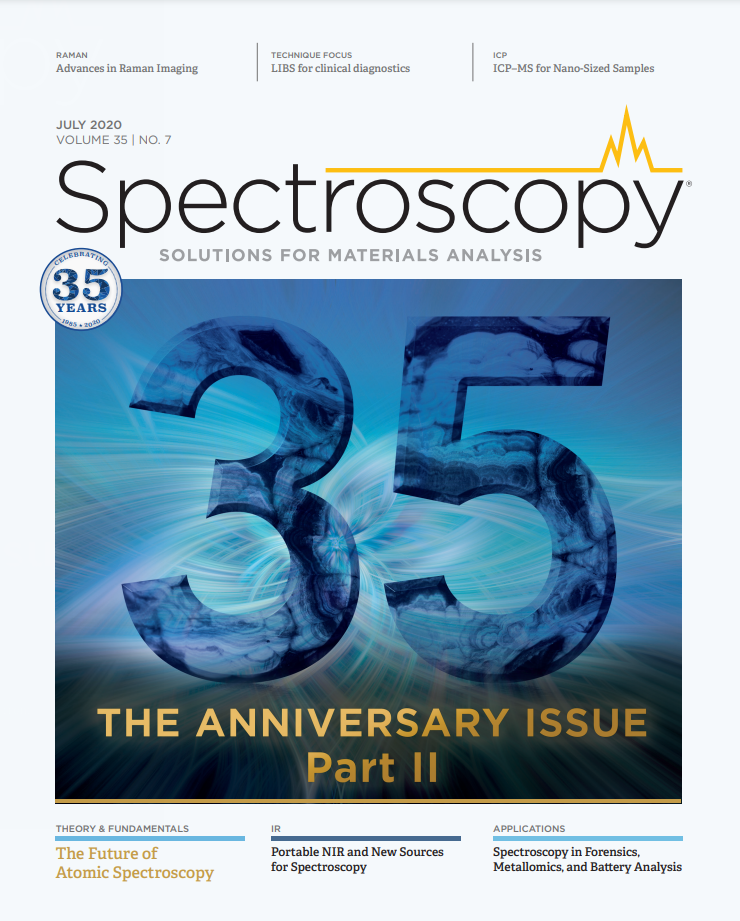Where Spectroscopy Is Heading
We are pleased to present here part II of our celebration of Spectroscopy’s 35th year of publishing. For this special coverage, we asked leading spectroscopists to share their perspectives on a range of spectroscopic techniques and applications.
Laura Bush

We are pleased to present here part II of our celebration of Spectroscopy’s 35th year of publishing. For this special coverage, we asked leading spectroscopists to share their perspectives on a range of spectroscopic techniques and applications. Their articles, split between the June and July issues, highlight important developments, look at opportunities, and consider what challenges must be overcome for future advances. We hope that these contributions-26 in total over the two issues-give you a good sense of the current state of analytical spectroscopy, and what the future might hold.
One theme that arose naturally in pulling together these articles is the contributions that various spectroscopic techniques can make in biomedical applications. In this issue, Katsumasa Fujita of Osaka University starts this off with a look at biomedical Raman imaging. Frank Vanhaecke of Ghent University, in turn, highlights the power of multicollector inductively coupled plasma–mass spectrometry (MC-ICP-MS) for isotope metallomics. Vincent Motto-Ross of the University of Lyon, with collaborators from medical institutions, illustrates the advance of laser-induced breakdown spectroscopy (LIBS) imaging into clinical diagnostics. Gunda Koellensperger and colleagues at the University of Vienna explain the central role that ICP-MS is playing in addressing the metallome at the single-cell level.
Nanoscale measurements with ICP-MS is another theme. John Olesik of the Ohio State University assesses progress in the use of single-particle ICP-MS for the analysis of engineered and natural nanoparticles, and the factors that can affect measurement accuracy. Joerg Bettmer and colleagues at the University of Oviedo discuss the challenges of analyzing the smallest of nanoparticles and potential strategies to overcome those difficulties.
With a look at instrumental developments, Steve Buckley of Ocean Insight, who is also our “Lasers and Optics Interface” columnist, summarizes recent advances in light sources for spectroscopy, discussing where further developments are expected and the broader impact on instruments and applications. Richard Crocombe, in turn, assesses the future of portable spectroscopy.
Addressing the use of spectroscopy in forensics, Brooke Kammrath of the University of New Haven explains how the combination of spectroscopy and microscopy can advance the analysis of forensically relevant traces. Diana Wright of the FBI discusses efforts to develop more uniform comparison language in forensic science reporting.
Taking a broader view, Gary Hieftje considers the current and future status of atomic spectroscopy, with an ominously titled article (“Is the End Near?”). In a companion piece, Rick Russo asks what must be done to ensure sufficient funding for the next generation of atomic spectroscopists.
Burkhard Beckhoff of Physikalisch-Technische Bundesanstalt wraps up our special coverage with a discussion of an application with broad potential impact in our modern lives: the use of X-ray spectrometry to investigate aging mechanisms in the high-energy-density battery materials that will power important devices in the future.
Anniversaries cause us to reflect on how far we have come, where we stand, and where we are going. The articles in our two anniversary issues do exactly that-highlighting important accomplishments as well as significant challenges that remain. Based on what I have seen so far, I believe that the spectroscopy community will embrace the opportunities of today, to bring even more exciting advances tomorrow.
